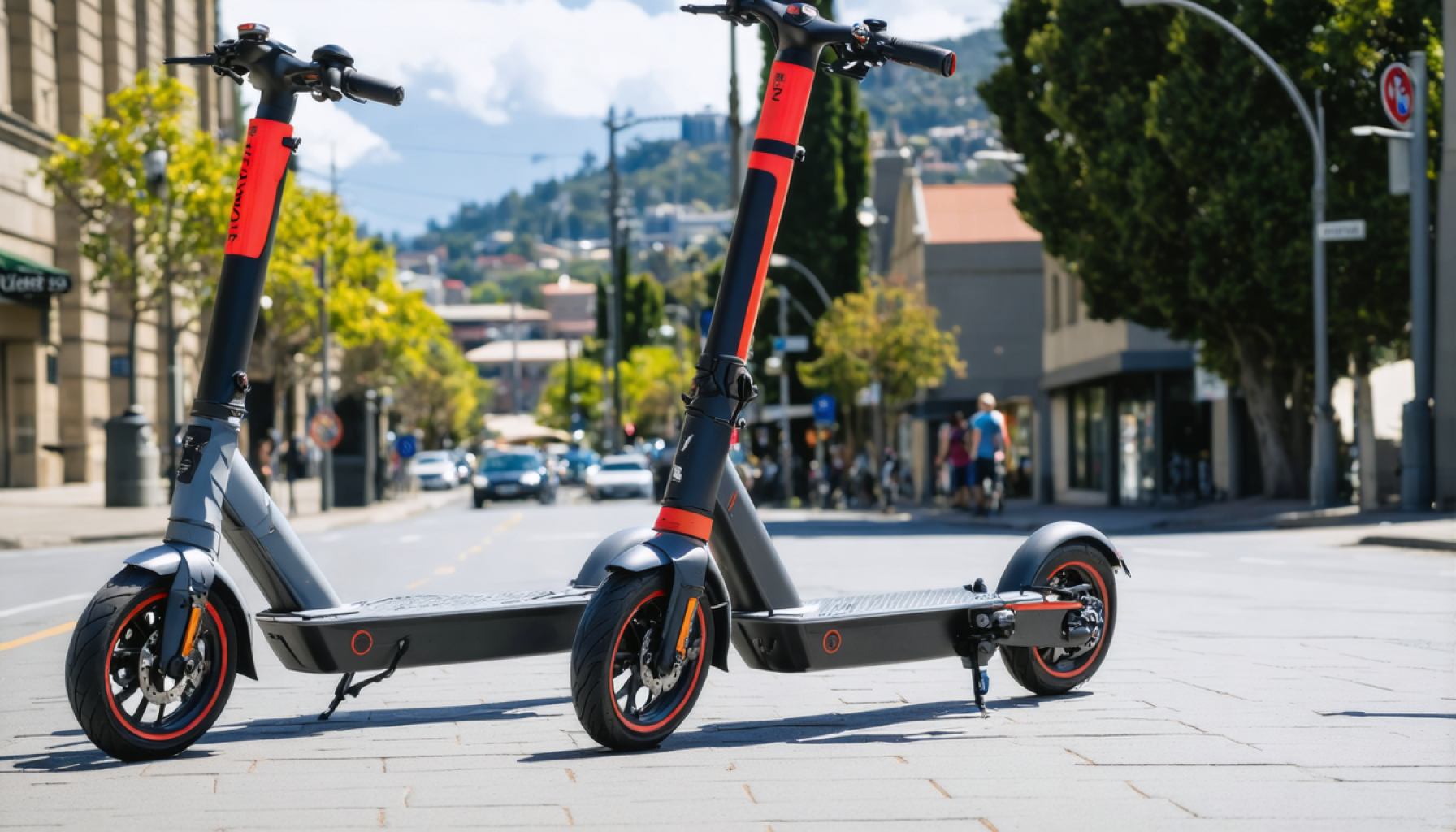- Hobart faces a crucial decision on whether to continue allowing e-scooters in the city, following Melbourne’s lead in banning them over safety concerns.
- E-scooters offer a fast, eco-friendly transport option, supported by 57% of Hobart residents despite decreasing monthly usage.
- The city council is considering not only continuing e-scooters but also introducing e-bikes as part of a broader urban mobility plan.
- Improving parking zones and implementing stringent controls are considered key to addressing parking issues associated with e-scooters.
- With Beam’s permit set to expire, the future of micromobility in Hobart depends on balancing innovation with pedestrian safety.
E-scooters have become a buzzing feature on Hobart’s streets, weaving a tapestry of convenience and chaos. As the city council prepares to make a pivotal decision, the question looms: will the scooters continue their journey through Hobart’s bustling CBD and charming Sandy Bay, or face the same fate as Melbourne’s recently banished fleet?
In the heart of Hobart, e-scooters glide under towering eucalyptus trees, serving as swift and eco-friendly transport allies for residents and tourists alike. A move to keep the colorful scooters would defy the trend seen in other Australian cities. Melbourne’s streets recently bid farewell to these zippy rides, banishing them due to pedestrian safety concerns.
As the council gathers to deliberate future plans, they lay out not just continuing the e-scooter project but also ushering in an era of e-bikes. Bright visions of a new transport era hover, shadowed by concerns over parking headaches. Innovative solutions hinge on better parking zones and stringent controls to tame the e-scooter parking woes.
A survey presents a city divided but slightly favoring the buzzing buzzards; 57% of Hobart’s dwellers cheers for a future with e-scooters. Meanwhile, the initial euphoria fades, reflected in declining monthly trips from a high of over 41,000 to a steady 13,000.
The e-scooter saga unfolds against the backdrop of Beam’s expiring permit. With change beckoning, Hobart stands at a crossroads. The future of micromobility in this vibrant city may rest in its commitment to innovative urban mobility solutions, striking a balance between progress and pedestrian peace.
Will E-Scooters Continue to Zoom Through Hobart? Discover the Future of Urban Mobility
How-To Steps & Life Hacks
How to Safely Use E-Scooters in Urban Areas:
1. Safety Gear: Always wear a helmet to protect against head injuries.
2. Observe Traffic Laws: Obey all traffic signals and signs.
3. Ride Defensively: Be aware of your surroundings and anticipate the actions of others.
4. Park Responsibly: Avoid blocking pathways; use designated parking areas.
5. Be Visible: Use lights at night and maintain a visible riding position.
Real-World Use Cases
Efficiency in Short Commutes:
E-scooters can drastically reduce travel time for short distances, especially during peak traffic. For instance, a trip that might take 20 minutes by car in dense traffic can be reduced to 5 minutes with an e-scooter.
Tourist Attraction:
Cities like Paris and Rome have seen tourists favor e-scooters for their ability to provide quick access to popular spots without the need for parking.
Market Forecasts & Industry Trends
The e-scooter market is expected to grow significantly, with predictions estimating a market value of USD $41.98 billion by 2030. This growth is driven by the increasing demand for eco-friendly transportation alternatives and the expansion of micro-mobility solutions in urban spaces (MarketWatch).
Reviews & Comparisons
Comparisons between e-scooters and e-bikes reveal that while e-scooters are exceptional for quick, short trips, e-bikes offer a more comfortable option for longer journeys. User reviews frequently highlight e-scooters for their convenience, though e-bikes receive praise for their stability.
Controversies & Limitations
E-scooters face backlash for safety concerns, particularly regarding pedestrian accidents and inappropriate parking. Such issues led to their removal in some cities, like Melbourne. Addressing safety perceptions is crucial for their continued acceptance.
Features, Specs & Pricing
Top Speed: Generally up to 25km/h.
Range: Typically covers 15–40 km on a single charge.
* Cost: Rental prices average between $1 to unlock and $0.15 per minute thereafter.
Security & Sustainability
Security: Most e-scooters come with built-in GPS tracking, but theft and vandalism remain concerns. Locking mechanisms are being improved.
Sustainability: E-scooters are charged using renewable energy sources where feasible, and companies like Lime and Bird are focusing on zero-emission operations.
Insights & Predictions
Increased Regulation: Expect cities to enforce tighter regulations on where e-scooters can operate and park.
Technological Advancements: Future models may incorporate advanced features like autonomous driving capabilities and improved battery life.
Tutorials & Compatibility
You can operate most rental e-scooters via a smartphone app that includes maps, availability, and safety instructions. Ensure your device is compatible with the app for seamless navigation and usage.
Pros & Cons Overview
Pros:
– Eco-friendly
– Reduces traffic congestion
– Cost-effective for short trips
Cons:
– Safety concerns for riders and pedestrians
– Parking and clutter issues
– Limited range and weather dependency
Actionable Recommendations
1. Lobby for Better Infrastructure: Push for designated e-scooter lanes and proper parking zones.
2. Participate in Surveys: Community feedback can influence council decisions and improve e-scooter programs.
3. Educate Riders: Promote safety and etiquette to reduce accidents and enhance user experience.
For more on innovative urban transportation solutions, check out MObilityStream.
Adjusting policies based on community feedback and trial programs is key to successful e-scooter integration. Embrace this potential by staying informed and engaged with local initiatives.
